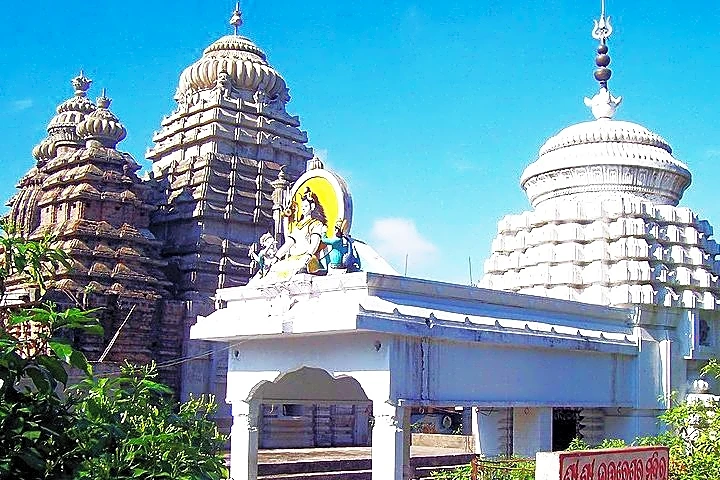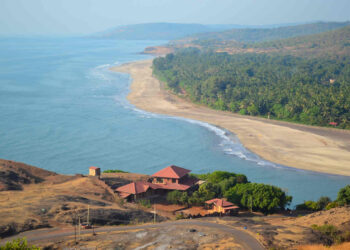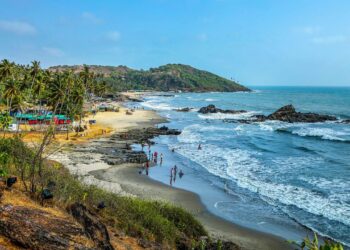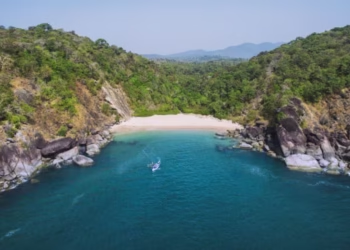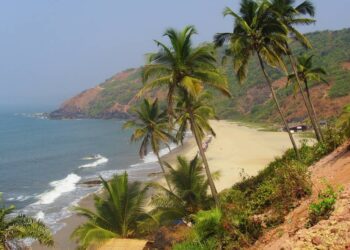Set on a quiet island in the Mahanadi River, 27 km from Cuttack, Odisha, the Dhabaleswar Temple is a revered shrine for Lord Shiva. Named “Dhabaleswar,” meaning “White God,” it draws its name from a divine tale. This ancient temple, surrounded by flowing waters, is adorned with old stone carvings. Its calm island setting and spiritual aura attract devotees and travelers. If you want to visit this holy place, here is a simple guide on its story, look, prayers, and how to go.
Fun Fact: The temple is famous for Odisha’s first hanging bridge, a 245-meter marvel connecting the island to the mainland.
Mythological Importance
Dhabaleswar carries tales from ancient times. One legend tells of a thief who stole a black calf and hid in a Shiva temple. As an angry crowd waited outside, hearing the calf’s cries, the thief prayed to Shiva for help. Lord Shiva appeared as a sanyasi, brought out a white calf, and saved the thief. The thief confessed and served Shiva lifelong, naming the deity Dhabaleswar for this miracle. Another tale, from the Padma Purana, says Lord Indra bathed here to cleanse a sin, founding the Shiva lingam. Locals believe the island holds divine power, granting peace and protection.
Historical Overview
The temple’s roots trace to the 10th or 11th century, during the Somavanshi dynasty, per Temple Knowledge. Some say worship began earlier. Cuttack, by the Mahanadi, was a sacred hub, old texts note. Stone carvings from the 11th century mark its age, per Wikipedia. King Purusottam Dev built it for his queen Padmabati, though exact dates are unclear, per Cuttack Municipal Corporation. In 1232 AD, Veer Kishore of Khurda rebuilt it, granting land to caretaker Mali, whose family founded Malisahi village.
In the 1800s, Athgarh rulers renovated it. After 1947, Odisha’s government took over. The Bhubaneswar Development Authority repaired it recently, keeping its old charm. Odia saints sang of Shiva here, spreading its fame. Today, it draws over 13 lakh visitors yearly, a key Shiva shrine, per East Indian Traveller. Its island setting and hanging bridge make it unique.
Architecture of Dhabaleswar Temple
Dhabaleswar Temple, on a small island hillock, blends Kalinga and Dravidian styles, per Temple Knowledge. The main shrine, from the 14th century, is 40 feet high with stone walls carved with Shiva’s trident, Parvati, and floral patterns, in black chlorite stone. The sanctum, a small chamber, holds a Shiva lingam adorned with gold, under a plain vimana with a stepped roof, lit by oil lamps. Carvings of Narasimha, Varaha, and Kartikeya dot the yard, per Medium.
Small shrines for Ganesha and Vishnu are in the courtyard. The Ganesha shrine, from 1200 CE, shows him with a modak, for wisdom. The Vishnu shrine, near the steps, has him with a conch, for grace. These shrines join the temple’s worship. A 245-meter hanging bridge, built in 2007, connects the island to Mancheswar, offering Mahanadi views. A garden and stone paths add calm, shaded by neem trees.
The temple is reached by the bridge for ₹2 or boats from Chahata Ghata. The courtyard, with rough stone, feels holy. A small tank, fed by the river, is for rituals, its edges plain but old. Wall niches hold minor deities like Nagas, guarding the island, per Tripadvisor. Carvings tell Shiva’s tales—his dance, his calm form—to guide devotees.
Rituals and Festivals
The temple hosts vibrant festivals. Bada Osha, on Kartika’s 14th day in November, is biggest, with over 10 lakh devotees offering Gaja Bhoga, a rice-jaggery cake, per Odisha TV. Mahashivratri, in February or March, sees water offerings and lamp rituals. Kartika Purnima, Pausha Purnima, and Dola Purnima bring crowds. Shravan’s Mondays have milk prayers for wishes, per Odisha Tour. Daily rituals include morning chants, Abhishekam, and evening lamps. Special pujas like Rudra Abhishekam cost ₹100-500, per Darshan Time. A stall gives free sweets as prasad.
Cultural shows during Bada Osha, with Odissi dance, add joy, per Tours Orissa. The hanging bridge and boat rides make festivals lively.
Information for Travelers
Hours and Entry: Open daily, 5:00 AM to 9:00 PM. Entry is free, but pujas cost ₹100-500. Bridge entry is ₹2. Photos are fine outside, not in the sanctum, per Tripadvisor.
Clothing: Wear modest clothes covering shoulders and knees. Men for rituals wear dhotis, often bare-chested.
How to Get There:
Air: Biju Patnaik Airport, Bhubaneswar, 57 km away, is closest. Taxis take 1 hour, ₹1000-1500.
Train: Cuttack Railway Station, 17 km away, connects to Kolkata (7 hours) or Bhubaneswar (30 minutes). Autos cost ₹200-300.
Road: Buses from Cuttack’s Badambadi (37 km) reach Mancheswar. Autos cost ₹50-100. The hanging bridge or boats from Chahata Ghata lead to the island.
Places to Stay:
Cuttack has hotels like Hotel Grand Residency (₹2000-3000) or Hotel Nirmal (₹1000-2000). Budget guesthouses are in Bhubaneswar, 30 km away. Stalls sell dosa, puri, and tea, per TripXL. Try Odia dishes like Dalma at Bhojanalya nearby.
Best Time to Visit:
October to March, 20-30°C, is cool. Monsoons offer a unique bridge experience. Weekdays are quiet. Bada Osha and Shivratri are busy, so book early.
Nearby Attractions:
Cuttack Chandi Temple, 27 km away, is a Durga shrine.
Barabati Fort, 25 km away, is historic.
Netaji Museum, 26 km away, honors Subhas Bose.
Ansupa Lake, 40 km away, is scenic.
Bhitarkanika National Park, 120 km away, has mangroves.
Final Thoughts
Dhabaleswar Temple in Cuttack, Odisha, a holy land in eastern India, is a gem of faith. Shiva’s divine presence fills its island, making it a must-see among Odisha’s sacred places.
